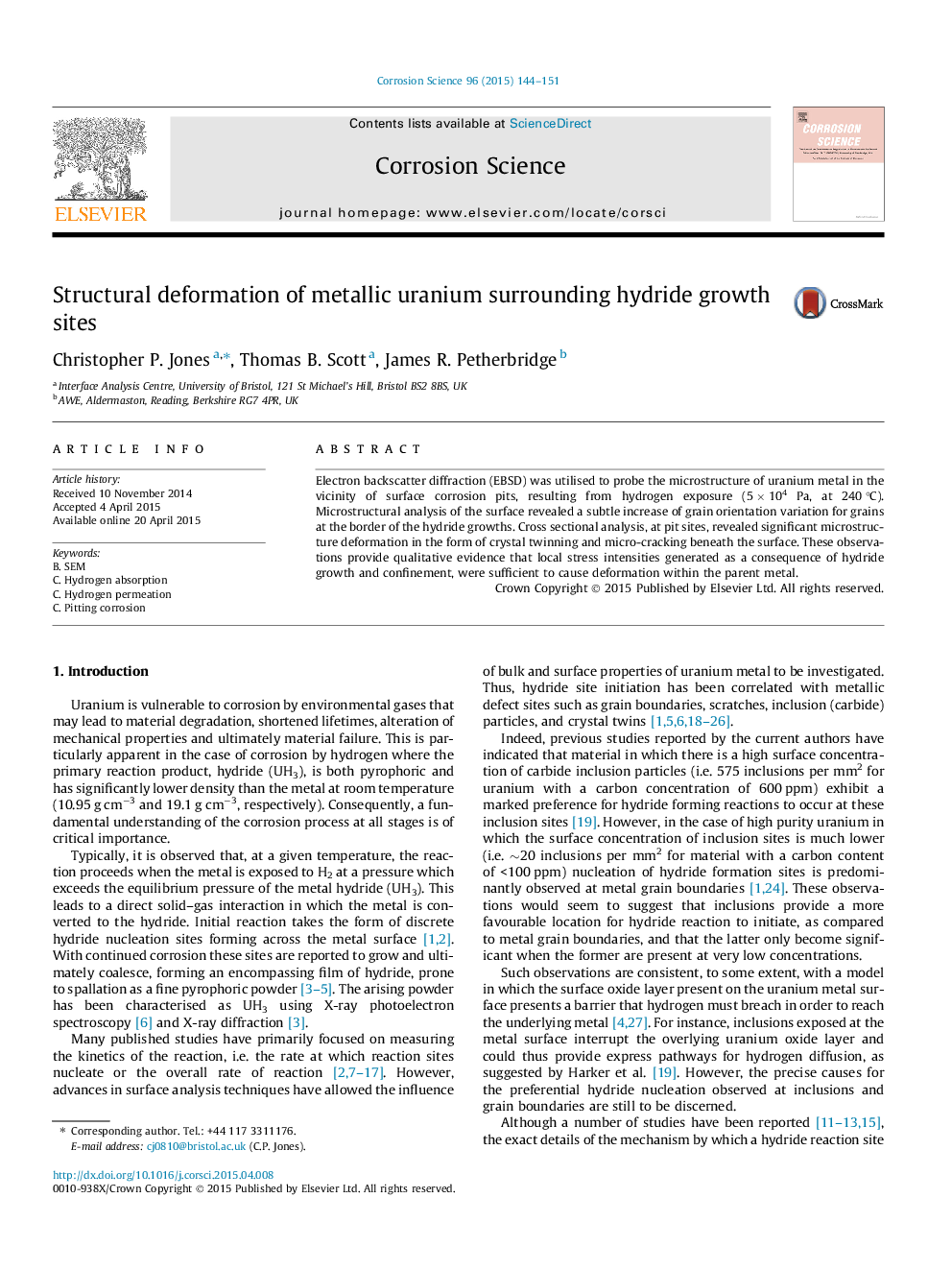| Article ID | Journal | Published Year | Pages | File Type |
|---|---|---|---|---|
| 1468505 | Corrosion Science | 2015 | 8 Pages |
Abstract
Electron backscatter diffraction (EBSD) was utilised to probe the microstructure of uranium metal in the vicinity of surface corrosion pits, resulting from hydrogen exposure (5 Ã 104 Pa, at 240 °C). Microstructural analysis of the surface revealed a subtle increase of grain orientation variation for grains at the border of the hydride growths. Cross sectional analysis, at pit sites, revealed significant microstructure deformation in the form of crystal twinning and micro-cracking beneath the surface. These observations provide qualitative evidence that local stress intensities generated as a consequence of hydride growth and confinement, were sufficient to cause deformation within the parent metal.
Related Topics
Physical Sciences and Engineering
Materials Science
Ceramics and Composites
Authors
Christopher P. Jones, Thomas B. Scott, James R. Petherbridge,
